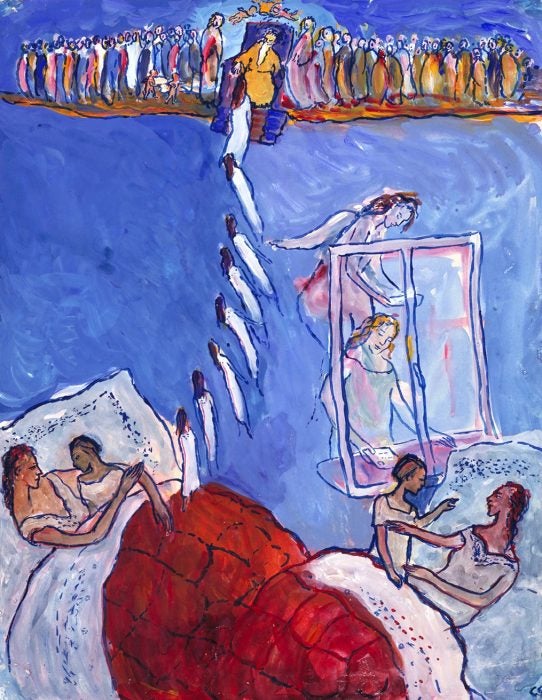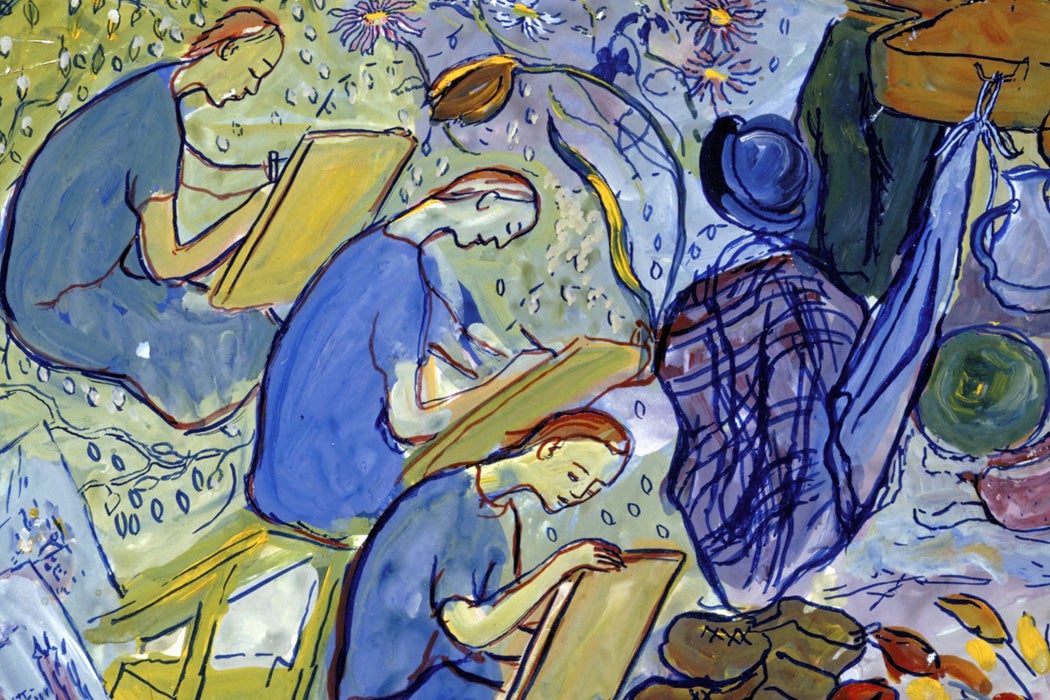Charlotte Salomon’s extraordinary Leben? oder Theater? Ein Singespiel was first exhibited in the early 1960s, but recently it’s become more widely known. A painting cycle composed of 769 finished gouaches and 500 additional paintings, Life? or Theater?, as it’s called in English, was painted while Salomon, a German Jew, was in exile in France between 1941-1943. Salomon was murdered by the Nazis at Auschwitz in October of 1943. She was twenty-six. Before being arrested by the Nazis, she had entrusted the work to a friend with the instruction, “Keep this safe: It is my whole life.”
Life? or Theater? is a sprawling, vibrant work combining painting, storytelling, family history, and musical notation. Its sheer size is impressive: “Placed side by side, the ten-by-thirteen-inch paintings would reach the length of three New York City blocks.” Modernism scholar Ariela Freedman writes that the work is “without true precedent” and has “eluded categorization by both genre and medium.” Some have called it the first graphic novel. Salomon herself called it all a “strange work” and “something crazy special.”
Salomon’s full title includes the descriptor Singespiel, however, which can be translated as song-play, operetta, or musical drama. Drama scholar and playwright Claudia Barnett writes that Life? or Theater? is very much a performance, with “a two act prelude, a main section, and an epilogue.” The characters themselves are presented as a cast, speaking in dialogue. Salomon had an intense relationship with music: her stepmother was a well-known contralto; Charlotte’s first love was an older music teacher. Throughout the work, musical cues are given for the images, as are notations when silence is appropriate.

Life? or Theater? tells how “Charlotte Kann” became an artist. (While it’s avowedly autobiographical, all of the characters have fictionalized names.) As “Charlotte Kann” details, when she learned in her twenties that there were a remarkable number of suicides in her family, she had to decide whether to kill herself or live. She decided to live and paint her story. In her own words:
And with dream-awakened eyes she saw all the beauty around here, saw the sea, felt the sun, and knew: she had to vanish for a while from the human plane and make every sacrifice in order to create her world anew out of the depths. And from that came: LIFE? OR THEATER?
2017 was the centennial of her birth. The biographies and monographs published in celebration last year followed the shocking revelations of 2015, when an illustrated letter of Salomon’s, long kept secret by her family, was made public. In the letter, she confesses to killing her grandfather with an overdose of Veronal in February 1943. Suddenly, in addition to everything else, Life? or Theater? (the complete edition now includes the confession) became a murder mystery.
Get Our Newsletter
Salomon’s first biographer, Mary Felstiner, councils caution on the reading of this painted letter. Felstiner cites an absence of any corroborating evidence for an actual poisoning or sexual abuse, the presumed rationale for such a murder, in the family.
So, was the confession life, or theater? Or both?







